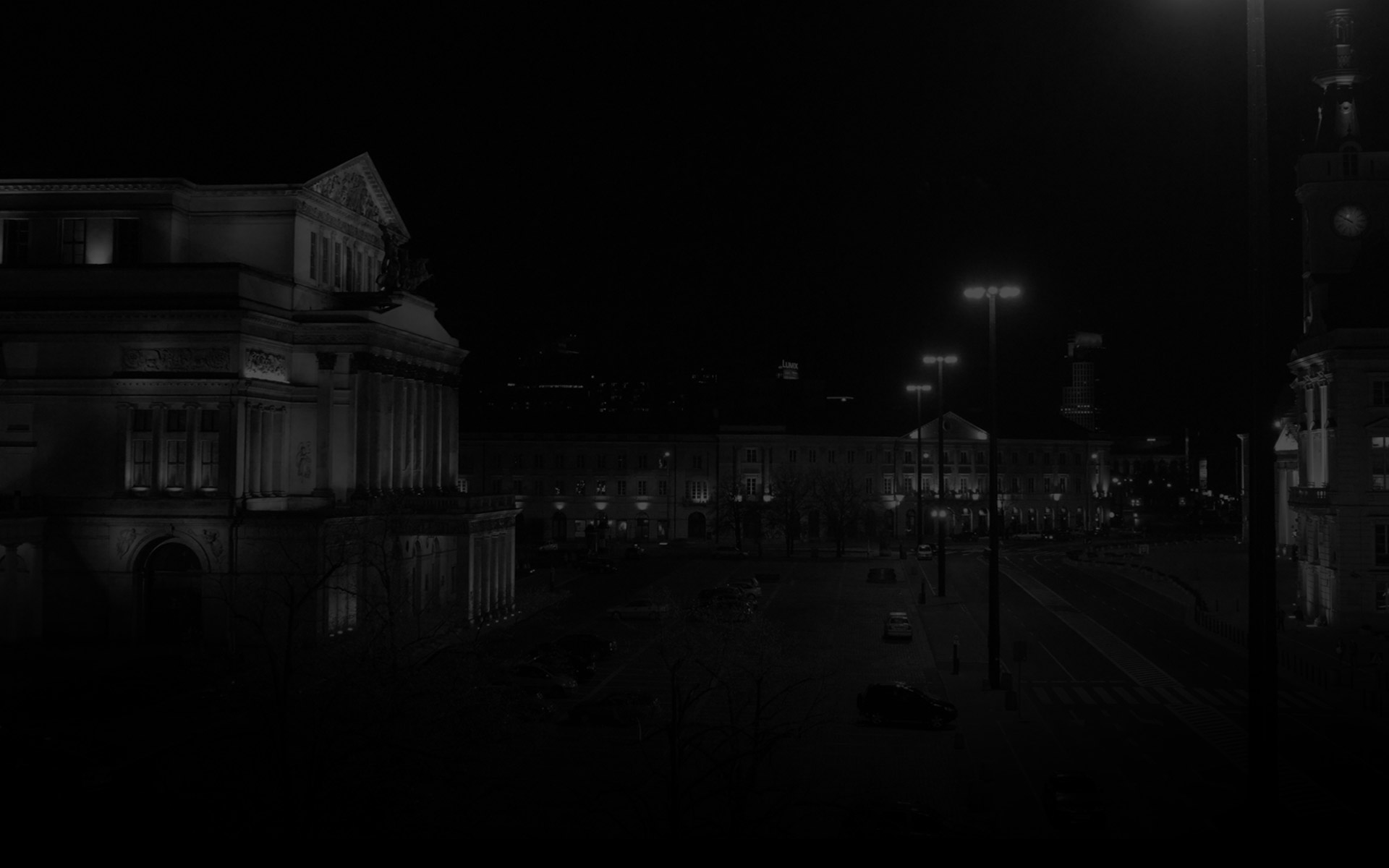On This Day
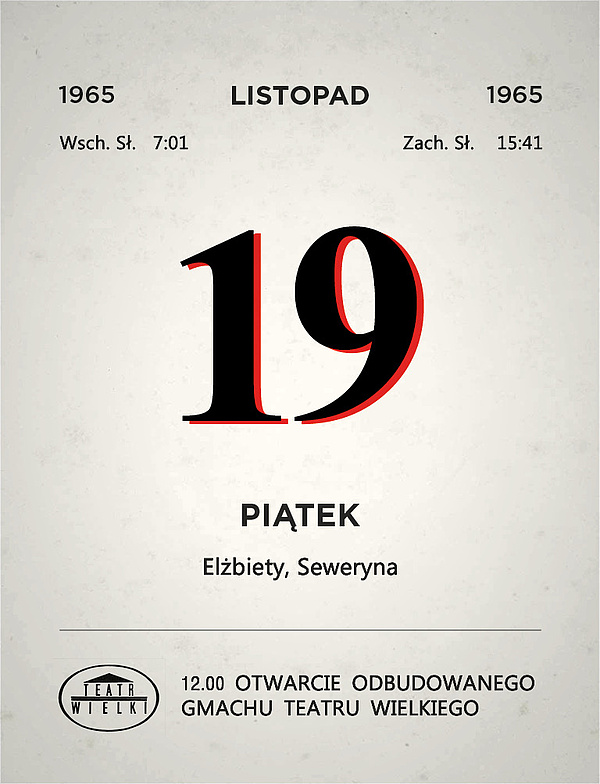
-
Starting from 1956, twelve different opening dates had been set. Only the thirteenth deadline was met. It was Friday, 19 November 1965. The day marked two anniversaries: of the first theatre performance staged in Polish in Warsaw (1765) and the placing of the cornerstone for the original theatre building designed by Antonio Corazzi (1825).
The official guests and dignitaries gathered at the opera house just before noon. The minister for culture and the arts, Lucjan Motyka cut the ribbon. The opening concert started with speeches, followed by a programme of Polish music and poetry performed by the orchestra, men’s choir and soloists of the Teatr Wielki, Warsaw Philharmonic Orchestra, and leading Polish actors. The audience heared an overture by Karol Kurpiński, the Theatre’s first director, fragments of Moniuszko’s Halka and The Haunted Manor, excerpts of Szymanowski’s Harnasie, works by Władysław Bogusławski and Leon Schiller, as well as a poem by Władysław Broniewski Ballada o Placu Teatralnym (Ballade of Teatralny Square). Conductors: Mieczysław Mierzejewski, Zdzisław Górzyński, and Witold Rowicki.
Afterwards, when the guests found themselves in the main foyer, Arnold Szyfman officially opened the Theatre Museum.
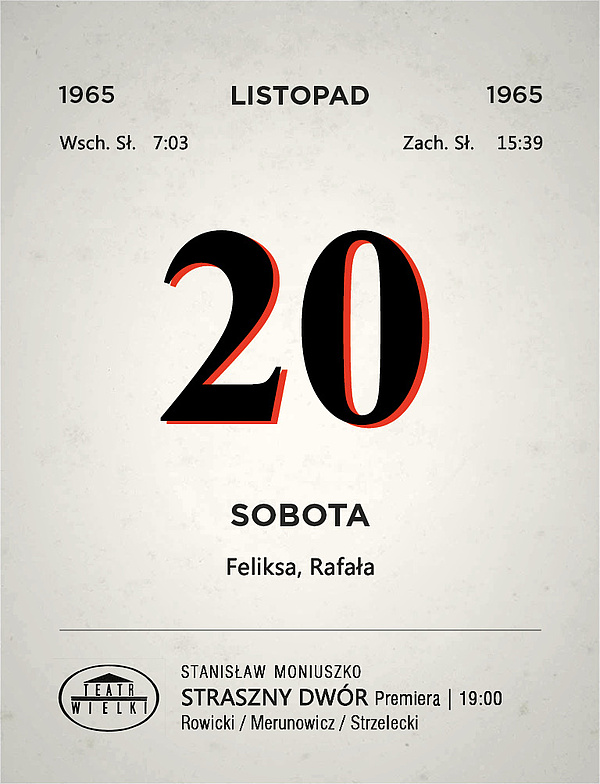
-
The first opera production premieres at the reopened Teatr Wielki – Moniuszko's The Haunted Manor directed by Jerzy Merunowicz, designed by Zenobiusz Strzelecki, and conducted by Witold Rowicki. The curtain is supposed to go up at 7 p.m. Ticket holders form a traffic jam – a rare thing at the time – in front of the lit up edifice, which stood out against the dark November sky, welcoming audience members with white-and-red flags adorning the facade. Neither the mist, nor the illumination can conceal the bullet holes in the colonnade.
In the words of Bogusław Kaczyński: 'Somehow I managed to get some tickets, we were going! I arrived earlier to have a look at the Theatre. It had grown legendary by then: people were saying that the interiors were simply astonishing: the whiteness of the marble, the crystals of the chandeliers, the tapestries, those parquets, unbelievable mosaics. All of that sounded so impressive that you couldn't simply arrive at 7 or 8 p.m. sharp – I don't remember the time that well, but I think it was 7. I came earlier, as soon as the door opened, I was one of the first guests who came and were inspecting everything – not the auditorium, but the foyer. Gradually, the crowd was getting more and more dense, walking around the foyer and presenting their outfits. It was a real fashion show. In the middle of poor, devastated Poland, in the centre of bombarded Warsaw, our beautiful, fashion loving ladies were dressed to the nines; men were in obligatorily tails, tuxedoes, or black suits. The atmosphere was solemn; we had chills when the special guests of the opening were entering the foyer.'
The guests in attendance included: Artur Rubinstein with his wife Aniela (Nela), the daughter of a former director of the Warsaw opera, Emil Młynarski, pre-war opera stars Maria Mokrzycka, Ewa Bandrowska-Turska, Ada Sari, Wanda Wermińska, Wiktor Brégy, and Aleksander Michałowski, as well as Antoine de Paris (Cierplikowski), the world's first celebrity hairdresser. In the crowd you could also spot Japanese ladies in kimonos, a Scott in a kilt, represenatatives of Communist China in their obligatory brown uniforms and the Polish working classes: farmers in folk costumes and miners in their habits.
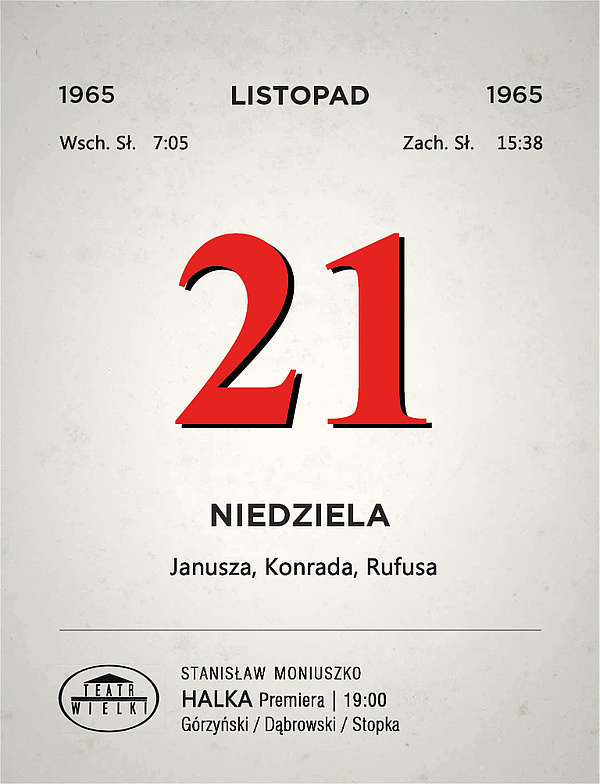
-
The second premiere in the newly reopened Teatr Wielki, Moniuszko's Halka, took place in a more relaxed atmosphere. Bronisław Dąbrowski's academic, simple and coherent staging was a nod to Leon Schiller's directing style. Zdzisław Górzyński conducted the performance with brilliance. The audience was undoubtedly pleased with the casting: Halina Słoniowska as Halka at the peak of her vocal form and beauty opposite the handsome Wiesław Ochman as Jontek with a tenor worthy of the world's top stages (as it will soon turn out). Bernard Ładysz sang Stolnik.
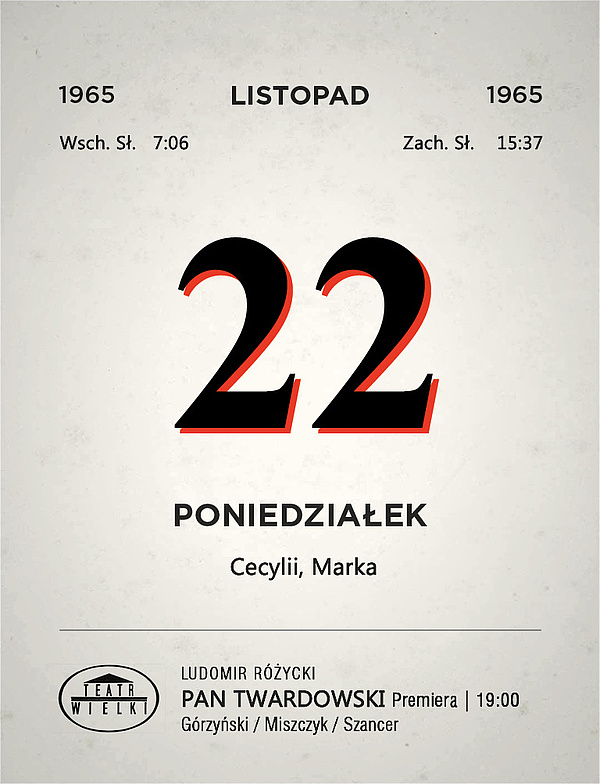
-
There had been two closed performances of Różycki's Pan Twardowski in preparation to the premiere. The choreography for the ballet was devised by Stanisław Miszczyk, Zdzisław Górzyński conducted. Wiesław Ochman sang the tenor solo. Set designer Jan Marcin Szancer wanted to wow the audience with rather naive effects. The scenery moved before their eyes: King Zygmunt August followed the spirit of his beloved Barbara along Wawel Castle's cloisters, which multiplied endlessly, there was a dragon, and the whole castle collapsed into the ground, which – admittedly – did give the audience goosebumps.
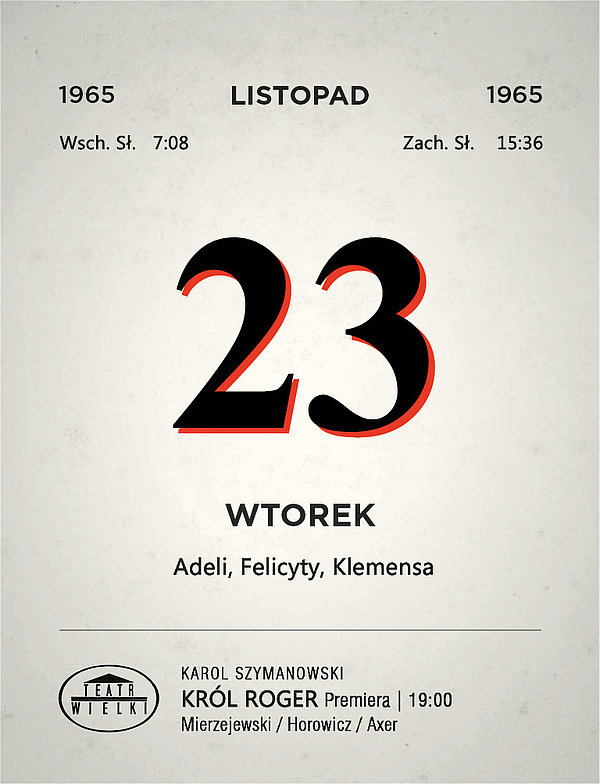
-
The seres of inaugural premieres ended with Karol Szymanowski's King Roger, an opera almost no-one had seen before. It was a novelty. Watching the dark staging designed by Otto Axer you could finally feel the atmosphere of a large theater. And remember Bohdan Wodiczko, because it was him who had chosen Axer, Mierzejewski, the conductor, and Horowicz, the director, to stage Roger a year before. Andrzej Hiolski's performance as the title character was the talk of the town. It seemed that Axer was the only one who had not been intimidated by the huge performance space and could use the size of the stage to his benefit.
Patrons of Teatr Wielki - Polish National Opera
Partners of the Opera Academy
